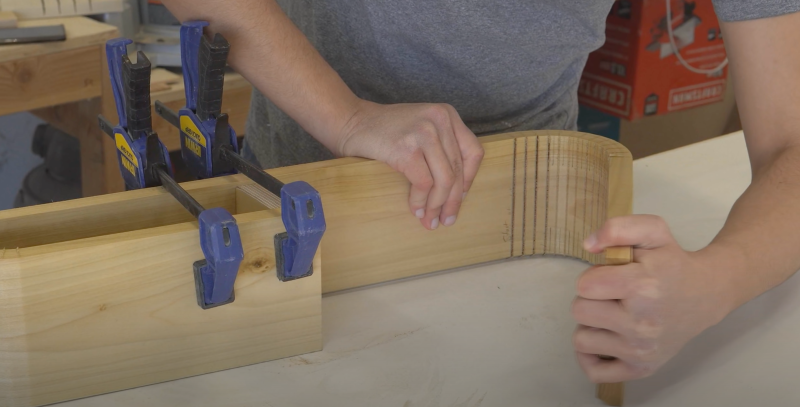Bending wood is a complex affair. Despite the curves inherent in trees, most wood does not naturally want to bend. There are a few tricks you can use to bend it however, such kerf cutting and steaming. [JAR made] has a clever hack to make better kerf cuts using a CNC bit.
Typically kerfs are cut with a table saw or a miter saw set to trench. Many laser-cut box generations use kerfs to allow the piece to bend. The downside is that the cuts are straight cuts that are the same thickness throughout. This means that when the wood is bent into its shape, there are large gaps that need to be filled if you want the wood to look continuous. The hack comes in by using a router (not the networking kind) with a 6.2-degree taper. This means that the kerfs that it makes are angled. By placing the right amount of cuts and spacing them out equally, you get a perfectly rounded curve. To help with that even spacing, he whipped up a quick jig to make the cuts repeatable. Once all the cuts were made, the time to bend came, and [JAR made] used some hot water with fabric softener to assist with the bend. His shelves turned out wonderfully.
He makes the important statement that this CNC bit isn’t designed with this use case in mine and the chances of it snapping or breaking are high. Taking precautions to be safe is key if you try to reproduce this technique. Perhaps you can bust out some framing lumber and bend it into some beautiful furniture.
















«with this use case in mine »
Easier to just cut the pieces separate at the correct angle, then lay them onto a strip of masking tape and wrap that around. It’s the glue that holds the entire tight together anyways – not the thin strip of continuous wood at the perimeter.
Ah, but that gives you a polyhedral surface around the curve, whereas the strip of uncut wood gives a more continous curve.
Fix that with some sandpaper?
So does kerf bending. It just has rounded seams.
You’re saying that it’s easier to cut a bunch of individual v-shaped strips (maybe by flipping a board for each cut on a table saw) then re-align & glue back together, then sand the sharp edges to get the desired roundness? I’m missing what’s so difficult with using a v-shaped router bit and, say, a router to cut the grooves then glue the grooves, wet the wood, and bend it.
Take a look at “bending plywood.” In our shop, we use it as the core for vacuum-bagged curved panels.
The article mentions the fragile character of the pointy end of the bit. At some point (pun) it don’t have flutes to cut and heats it’s way to failure. Probably better to have it straight cut at some small but cutting diameter and still have good surfaces inside and out.